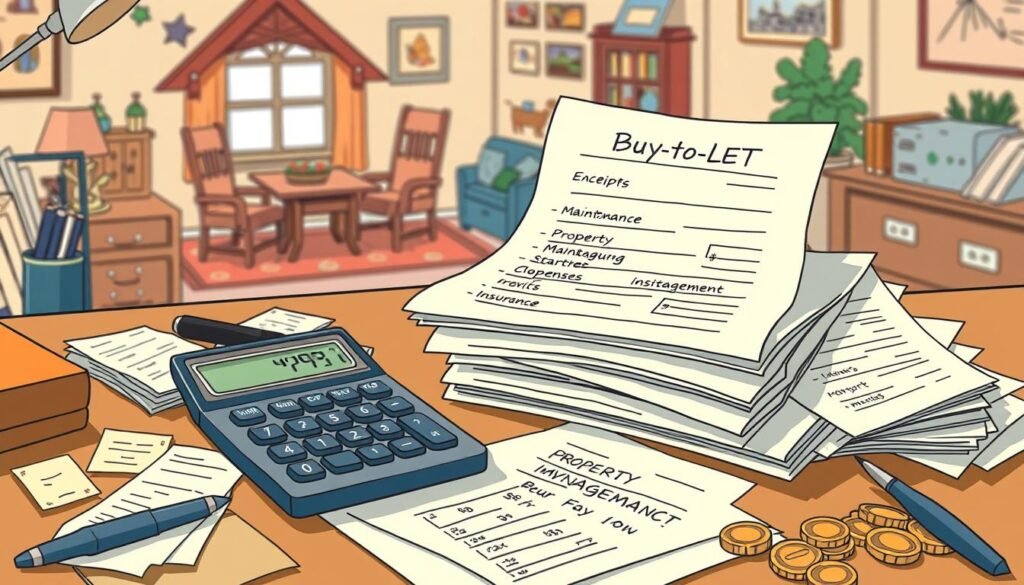Ever wondered why some landlords don’t make a profit, even with high rents? The secret lies in hidden costs they often miss. With average UK rents at £794 a month, and London’s at £1,665, it seems like a great investment. But, many new landlords don’t realise the true costs can be up to £8,359 a year.
Dealing with landlord expenses in the UK can be tough. There are many costs, from mortgages to legal fees, and maintenance. Knowing these hidden costs is key for anyone thinking of renting out a property or improving their current portfolio.
In this detailed guide, we’ll cover 15 key expenses landlords need to know. We’ll look at all the costs, from buying the property to managing it. Whether you’re experienced or new to property investing, this article will help you make smart choices and increase your profits in the UK’s lively property market.
Key Takeaways
- Landlords often underestimate annual costs by up to £8,359
- UK average monthly rent is £794, rising to £1,665 in London
- Buy-to-let mortgages typically require a 20% minimum deposit
- Letting agent fees can range from 5% to 20% of rental income
- Essential costs include safety certificates, deposit protection, and property maintenance
- Understanding tax obligations and void periods is crucial for financial planning
- Professional services and memberships can provide valuable support and guidance
Buy-to-Let Mortgage Costs and Requirements
For UK landlords, understanding buy-to-let mortgage costs and requirements is key. These mortgages are different from residential ones. They come with their own financial rules and implications.
Deposit Requirements and Interest Rates
Buy-to-let mortgages usually need bigger deposits, from 15% to 25% of the property’s value. The interest rates are higher, averaging 5.34% for two-year fixes and 5.45% for five-year fixes. Lenders look at potential rental income to decide the loan amount.

Mortgage Arrangement and Booking Fees
UK buy-to-let costs include various fees. Arrangement fees are 1-2% of the loan amount, and booking fees are £99-£250. Valuation fees start at £150. These fees can greatly affect the borrowing cost.
Early Repayment Charges and Exit Fees
Early repayment charges can be up to 5% of the remaining mortgage balance. Exit fees are between £75 and £300. Landlords need to consider these costs when planning a buy-to-let mortgage.
| Fee Type | Typical Cost Range |
|---|---|
| Arrangement Fee | 1-2% of loan amount |
| Booking Fee | £99-£250 |
| Valuation Fee | £150+ |
| Exit Fee | £75-£300 |
Initial Property Purchase Expenses
When you start investing in buy-to-let, you need to think about more than just the price. There are many costs that can affect your budget. These are important to consider before you buy.
One big cost is the solicitor’s fees for the property transfer. These can be between £850 and £1,500. It’s important to pick a good solicitor who knows about buy-to-let. This will help the process go smoothly.
Stamp duty UK is another big expense. It’s higher for buy-to-let than for regular homes. The extra 3% can make your initial costs go up a lot.

Property surveys are also key. Their cost depends on how detailed you need them to be:
- Basic valuation surveys: £200 to £400
- Homebuyer’s reports: £400 to £800
- Building/structural surveys: Over £1,000
These surveys can spot problems early. This can save you money on repairs later on.
| Expense Type | Estimated Cost Range |
|---|---|
| Solicitor’s Fees | £850 – £1,500 |
| Stamp Duty (Additional Property) | 3% – 15% of property value |
| Property Surveys | £200 – £1,000+ |
Knowing these costs upfront helps you plan better. It lets you make smart choices for your property investments.
Letting Agent Services and Associated Costs
Letting agent fees in the UK change based on the service level. It’s key for landlords to grasp these costs to manage their investments well.
Tenant-Find Only Services
Let-Only services cost between 50% and 80% of the first month’s rent. This covers advertising, viewings, and tenant checks. National agencies might charge less, while local ones might be pricier but offer a more personal touch.
Rent Collection Services
Rent collection services cost 8% to 12% of the monthly rent. They ensure rent is paid on time and might include chasing late payments. Some might add extra for lease preparation, around £30 to £50.
Full Property Management Fees
Full property management fees in the UK are 12% to 15% of the monthly rent, but can hit 20% in London. This service handles tenant management, maintenance, and property checks.
| Service Type | Cost Range | Additional Fees |
|---|---|---|
| Tenant-Find Only | 50-80% of first month’s rent | Tenant referencing (£50-£150) |
| Rent Collection | 8-12% of monthly rent | Lease preparation (£30-£50) |
| Full Management | 12-20% of monthly rent | Inventory fees (£100-£300) |
Landlords should watch out for extra costs like renewal fees, marketing, and end-of-tenancy cleaning. By comparing agents and their fees, landlords can save up to £1,966 a year on management fees.
Legal Requirements and Documentation Expenses
For UK property owners, understanding legal requirements and documentation costs is key. These costs are a big part of the hidden expenses landlords face.
Referencing and credit checks are vital in picking tenants. They cost about £400 on average. This helps landlords choose the right tenants, reducing risks of unpaid rent or damage.
Energy Performance Certificates (EPCs) are a must and cost between £60 and £80. They last 10 years and show a property’s energy use. Gas Safety Certificates, needed every year, cost more than £80.
In many UK areas, landlords must register. This costs between £34 and £80. It helps local authorities keep an eye on rental properties and ensure they meet standards.
Data protection is also important. Landlords must pay £40 a year to the Information Commissioner’s Office (ICO) to follow data protection rules.
| Legal Requirement | Frequency | Estimated Cost |
|---|---|---|
| Referencing and Credit Checks | Per tenant | £400 |
| Energy Performance Certificate | Every 10 years | £60-£80 |
| Gas Safety Certificate | Annually | £80+ |
| Landlord Registration | One-time | £34-£80 |
| ICO Registration | Annually | £40 |
Knowing these legal needs and costs is crucial for landlords. It helps them stay compliant and avoid fines. Budgeting for these costs ensures a successful and profitable rental business.
Hidden Buy to Let Costs UK: 15 Expenses Landlords Must Know
Landlords in the UK face many hidden costs when managing buy-to-let properties. It’s key to know these expenses for successful property investment. Here are some important financial considerations for every landlord.
Property Insurance Requirements
Landlord insurance UK is a must-have for your investment. It’s not legally required but most mortgage lenders demand it. A good policy covers buildings, contents, and liability. Costs depend on property value and location, so budgeting for it is vital.
Safety Certificates and Inspections
Safety certificate costs are a big expense for landlords. These include gas safety, electrical checks, and energy performance certificates. Prices vary from £60 to £350 per certificate, based on property size and type. Regular checks are essential for tenant safety and legal compliance.
Tenant Deposit Protection Schemes
Landlords must protect tenants’ deposits in approved schemes. Deposit protection fees differ by scheme and deposit amount. For example, the Deposit Protection Service charges £15-£20 per deposit. Not protecting deposits can lead to big fines, so it’s a key cost to include in your budget.
| Expense Type | Estimated Annual Cost |
|---|---|
| Landlord Insurance | £150 – £500 |
| Safety Certificates | £200 – £500 |
| Deposit Protection | £15 – £30 per tenancy |
By planning for these hidden costs, landlords can manage their finances better. Remember, these costs are often tax-deductible. Keep accurate records for your annual tax return.
Property Maintenance and Repairs
Keeping a rental property in good shape is key for landlords. The costs of maintenance can eat into your profits, so it’s vital to plan your budget carefully. Let’s look at the main areas of upkeep and repairs that landlords must think about.
Regular Maintenance Costs
Keeping your property in top condition is crucial. It helps keep its value high and keeps tenants happy. In the private rented sector, maintenance costs make up over a fifth of a landlord’s income. This includes tasks like painting, small repairs, and looking after the garden.
To handle these costs well, set aside some of your rental income for maintenance. This way, you can avoid unexpected expenses.
Emergency Repairs Budget
Unexpected problems can pop up at any time. So, it’s smart to have a fund for emergency repairs. Repair costs have gone up a lot lately, with a 16.8% rise in April 2022 for social landlords. To keep costs down, do regular checks and inspections after repairs.
This helps avoid the need for expensive fixes because of poor workmanship.
Property Upgrades and Improvements
Investing in your property can boost its value and attract better tenants. But, it’s important to think about the cost and benefits. Choose upgrades that offer good value, like energy-saving appliances or modern features.
Remember, material prices went up by 4.7% in April 2023. So, factor these increases into your upgrade plans.
| Maintenance Type | Percentage of Rental Income | Key Considerations |
|---|---|---|
| Regular Maintenance | 20-25% | Routine tasks, preserving property value |
| Emergency Repairs | 5-10% | Unexpected issues, prompt action required |
| Property Upgrades | 10-15% | Value-adding improvements, material cost increases |
By managing maintenance and repairs well, landlords can safeguard their investment. Keep detailed records of all expenses for tax purposes. If managing the property becomes too much, think about hiring professional management services.
Tax Obligations and Financial Considerations
For those who own buy-to-let properties, knowing about landlord tax UK is key. Rental income tax is a big part of this. Landlords pay income tax on their rental profits at their marginal rate. This can be up to 45% for those earning a lot.
When selling a property, capital gains tax is also a big deal. For 2024/2025, the tax rates are 18% for basic rate taxpayers and 28% for higher rate taxpayers.
Many landlords use accountants to handle these taxes. These experts can lower tax bills by claiming expenses against rental income.
| Income Tax Bands (2024/2025) | Rate |
|---|---|
| £0 – £12,570 | 0% |
| £12,571 – £50,270 | 20% |
| £50,271 – £125,000 | 40% |
| £125,001 and above | 45% |
Council tax is usually the tenant’s bill. But, landlords must pay it during void periods. This shows why it’s vital to plan for times when the property is empty when budgeting for a buy-to-let.
Void Periods and Tenant Management
Managing rental property costs during void periods is key for property investors. Landlords need to plan for income gaps and extra expenses when properties are empty.
Rental Income Gaps
Void periods can cut into a landlord’s monthly income. It’s smart to set aside at least one month’s worth of costs for mortgage payments, council tax, and bills. Some landlords also face higher council tax on empty homes.
Tenant Screening Costs
Good tenant screening is vital to avoid long void periods. Although it costs upfront, it helps find reliable tenants. This can cut down on future vacancies. Services check credit, employment, and rental history.
Inventory Services
Professional inventory services, priced at £100 to £200, are crucial for avoiding deposit disputes. They document the property’s state before and after tenancies. This helps settle any disputes fairly.
| Expense Type | Estimated Cost | Frequency |
|---|---|---|
| Tenant Screening | £20 – £50 | Per tenant |
| Inventory Services | £100 – £200 | Per tenancy |
| Rent Guarantee Insurance | £160 – £300 | Annual |
Think about rent guarantee insurance to guard against rent arrears. It costs £160 to £300 a year but offers peace of mind.
To cut down on void periods, keep properties in good shape, set fair rents, and build good landlord-tenant relationships. Allowing pets and picking a good letting agent can also attract long-term tenants and shorten vacancy times.
Professional Services and Memberships
Landlords often forget the value of professional services and memberships. These can be very helpful in managing properties and keeping up with laws. They make the complex world of property easier to handle.
Being part of landlord associations has many benefits. The National Residential Landlords Association, for example, offers legal help, the latest news, and chances to meet others. With 45% of landlords in England having just one property, these groups are a big help for newcomers.
Professional property management services can make life easier. They take care of finding tenants, fixing things, and collecting rent. Since 34% of rented homes have kids, they make sure properties are well looked after.
It’s also important to have legal and financial experts. They help with taxes and dealing with tenant issues. With 58% of landlords raising rent, they help set fair prices and keep tenants happy.
| Service | Benefit | Cost Consideration |
|---|---|---|
| Landlord Associations | Legal support, industry updates | Annual membership fee |
| Property Management | Tenant screening, maintenance | Percentage of monthly rent |
| Legal Counsel | Contract reviews, dispute resolution | Hourly or flat fee |
| Accountant | Tax optimisation, financial planning | Annual or per-service fee |
While these services cost money, they save landlords time, money, and stress. Getting professional help ensures you follow the rules, work efficiently, and make money from your properties.
Conclusion
Starting a buy to let investment journey means understanding many costs. These include mortgage deposits and ongoing maintenance. Landlords need to budget for these financial commitments carefully.
The UK property market has its own challenges and chances. It’s key for investors to do thorough research and planning.
In our look at landlord expenses, we found 15 key costs. These affect a property’s profit. They include mortgage fees, legal needs, maintenance, and taxes.
By knowing these costs, landlords can make better financial plans. This helps avoid unexpected money problems.
Doing well in buy-to-let needs careful planning and smart money management. Landlords who understand these costs can handle the property world better.
Staying up-to-date with laws, taxes, and market trends helps. This way, investors can make smart choices. They can increase profits and reduce risks in the UK property market.




